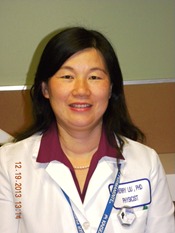Program Information
Biological Equivalent Dose (BED) Comparison Between Permanent Interstitial Brachytherapy and Conventional External Beam Radiotherapy for Prostate Cancer
X Liu*, J Rahimian , H Cosmatos , B Goy , C Heywood , Y Qian , Kaiser Permanente, Los Angeles, CA
Presentations
SU-E-T-55 Sunday 3:00PM - 6:00PM Room: Exhibit HallPurpose:The goal of this research is to calculate and compare the Biological Equivalent Dose (BED) between permanent prostate Iodine-125 implant brachytherapy as monotherapy with the BED of conventional external beam radiation therapy (EBRT).
Methods:A retrospective study of 605 patients treated with Iodine-125 seed implant was performed in which physician A treated 274 patients and physician B treated 331 patients. All the Brachytherapy treatment plans were created using VariSeed 8 planning system. The Iodine-125 seed source activities and loading patterns varied slightly between the two physicians. The prescription dose is 145 Gy to PTV for each patient. The BED and Tumor Control Probability (TCP) were calculated based on the TG 137 formulas. The BED for conventional EBRT of the prostate given in our institution in 2Gy per fraction for 38 fractions was calculated and compared.
Results:Physician A treated 274 patients with an average BED of 123.92±0.87 Gy and an average TCP of 99.20%; Physician B treated 331 patients with an average BED of 124.87±1.12 Gy and an average TCP of 99.30%. There are no statistically significant differences (T-Test) between the BED and TCP values calculated for these two group patients.The BED of the patients undergoing conventional EBRT is calculated to be 126.92Gy. The BED of the patients treated with permanent implant brachytherapy and EBRT are comparable. Our BED and TCP values are higher than the reported values by TG 137 due to higher Iodine-125 seed activity used in our institution.
Conclusion:We calculated the BED,a surrogate of the biological response to a permanent prostate brachytherapy using TG 137 formulas and recommendation. The TCP of better than 99% is calculated for these patients. A clinical outcome study of these patients correlating the BED and TCP values with PSA and Gleason Levels as well as patient survival is warranted.
Contact Email:


